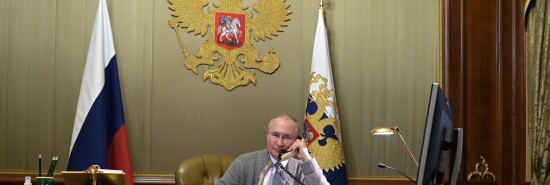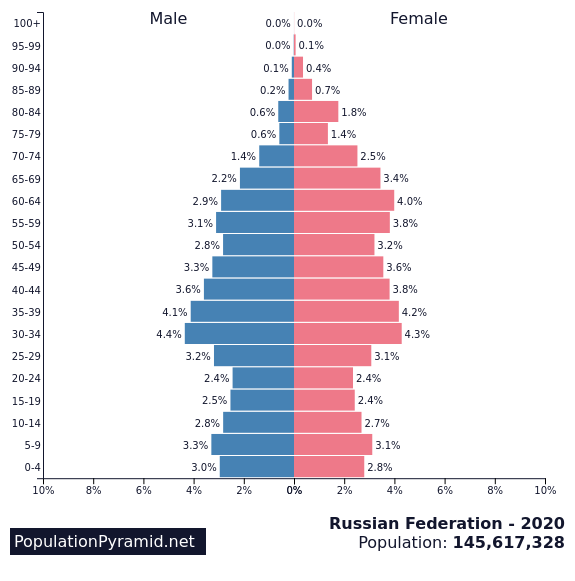
Demographic disaster: Russia’s baby bust was 10 times costlier than its war
Timothy P. Carney
Video Embed
When the Soviet Union broke up, Russia entered a lengthy baby bust, with its birthrate falling below replacement level (2.1 babies per woman), and continuing to drop for a decade until it hit 1.16 in 1999.
Russia’s birthrate has had ups and downs since then (notably, Russia’s baby-making increased while the U.S. entered its baby bust in 2008), and has again been falling since 2016. The country hasn’t been at or even close to 2.1 babies per woman since the late 1980s.
GAS PRICES TODAY: WHERE TO FIND THE CHEAPEST FUEL ACROSS THE COUNTRY
Check out Russia’s age pyramid in 2020:

There is a massive dearth of people under 30, particularly those between age 15 and age 30.
Keep this in mind as you read about Russia’s labor shortage in the Wall Street Journal: “The war in Ukraine has fueled Russia’s worst labor crunch in decades after hundreds of thousands of workers fled the country or were sent to the front lines, weakening the foundations of an economy weighed down by sanctions and international isolation.”
This is definitely true. Fighting a destructive and pointless war is one of the most effective ways to deplete your workforce. Hundreds of thousands prime-age Russian men are either in combat (thus unavailable to work), dead (thus unavailable to work), or have fled the country to avoid combat and/or death (and thus unavailable to work).
The Wall Street Journal piece mentions low fertility and demographic decline, but undersells its importance. That population pyramid above is from 2020, before Russia invaded Ukraine.
If Russia had had as many babies in the 1990s that it had in the 1980s, there would be about 4 million more Russian men in the 20s today than there are. For comparison’s sake, about 300,000 men have been sent off to war.
In manpower, the 1990s baby bust has cost Russia’s economy more than 10 times as much as the war has.
Russia’s current experience is a lesson for the U.S., whose baby bust was later and shallower but will still make an impact. While most American adults have spent their lives worrying about or dealing with high unemployment, a baby-busted economy has the opposite problem.
CLICK HERE TO READ MORE FROM THE WASHINGTON EXAMINER
Here’s some telling data from Russia: “In the fourth quarter of last year there were 2.5 openings per job seeker, the highest since 2005, according to FinExpertiza. Some 35% of manufacturing firms reported staff shortages in April, the highest value since 1996 in monthly surveys by Russia’s Gaidar Institute for Economic Policy.”
In the U.S., the working-age population has been flat for about six years. It will begin declining this decade. Russia’s problems (though hopefully in a far less acute way) will soon be ours.
